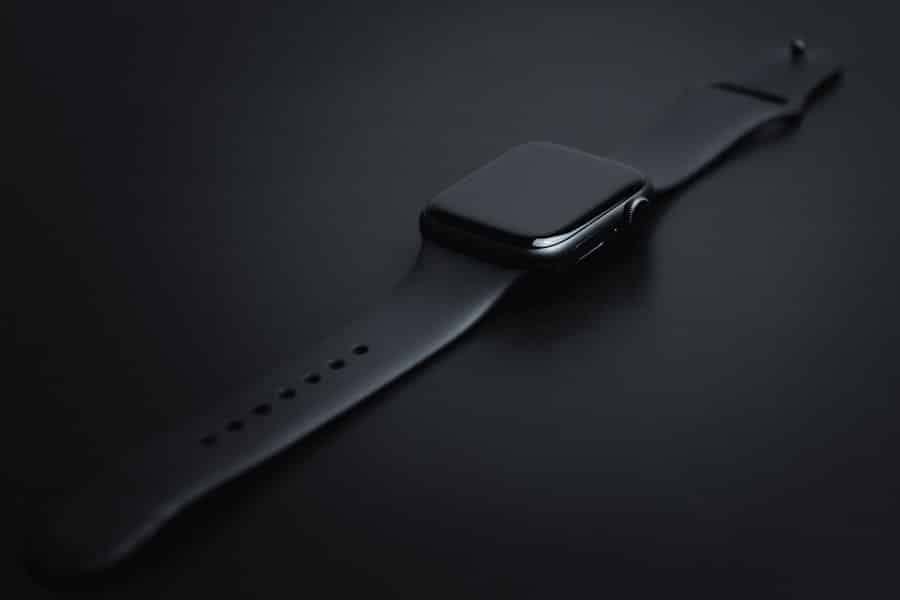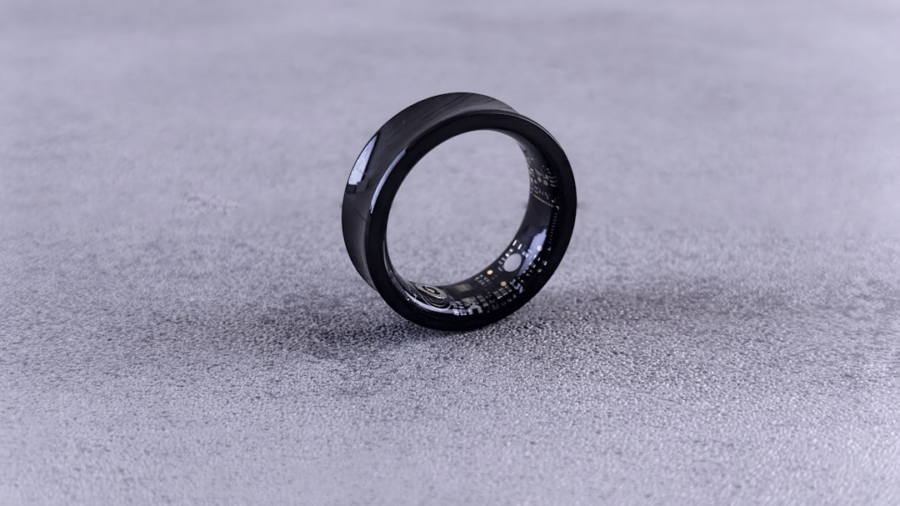The advent of wearable technology has revolutionized various fields, including healthcare, fitness, and personal wellness. Among its most significant applications is the monitoring and research of sleep disorders. Sleep is a fundamental aspect of human health, influencing physical, mental, and emotional well-being.
However, sleep disorders affect millions of individuals worldwide, leading to a myriad of health complications. Traditional methods of diagnosing and studying these disorders often involve cumbersome procedures, such as overnight polysomnography in sleep labs, which can be both inconvenient and uncomfortable for patients. Wearable devices have emerged as a promising alternative, offering a more accessible and user-friendly approach to sleep monitoring.
These devices can measure heart rate, movement, and even blood oxygen levels, providing valuable insights into an individual’s sleep patterns. The integration of advanced sensors and algorithms allows for continuous data collection in real-world settings, enabling researchers to gather extensive datasets that were previously unattainable.
This shift towards wearable technology not only enhances the understanding of sleep disorders but also empowers individuals to take charge of their sleep health.
Key Takeaways
- Wearables have revolutionized sleep disorder research by providing convenient and non-invasive monitoring of sleep patterns.
- The impact of wearables on sleep monitoring has allowed for continuous and real-time data collection, leading to more accurate and comprehensive insights into sleep quality and quantity.
- Wearable technology has the potential to aid in the diagnosis of sleep disorders by providing objective data for healthcare professionals to analyze and interpret.
- Advancements in wearable devices for sleep disorder research have led to the development of more sophisticated and user-friendly tools for monitoring and analyzing sleep patterns.
- Wearables play a crucial role in tracking sleep patterns, allowing individuals to gain a better understanding of their sleep habits and make informed decisions about their sleep health.
The Impact of Wearables on Sleep Monitoring
Wearable devices have significantly transformed the landscape of sleep monitoring by providing real-time data that can be easily accessed and analyzed. Unlike traditional methods that require clinical settings, wearables allow users to track their sleep patterns in the comfort of their own homes. This convenience encourages more consistent usage and can lead to more accurate data collection over extended periods.
For instance, a study published in the journal “Sleep” demonstrated that participants using wearable devices reported higher adherence rates compared to those undergoing traditional sleep studies. Moreover, wearables facilitate the collection of longitudinal data, which is crucial for understanding sleep trends over time. By continuously monitoring sleep metrics such as duration, quality, and disturbances, researchers can identify patterns that may correlate with specific sleep disorders.
For example, a wearable device might reveal that an individual experiences frequent awakenings during the night, prompting further investigation into potential underlying conditions such as insomnia or sleep apnea. This level of detail is invaluable for both researchers and clinicians in tailoring personalized treatment plans.
Wearable Technology and Sleep Disorder Diagnosis

The diagnostic capabilities of wearable technology have expanded significantly in recent years. Devices equipped with advanced sensors can detect various physiological signals associated with sleep disorders, such as irregular heartbeats or changes in breathing patterns. For instance, some wearables utilize photoplethysmography (PPG) to monitor heart rate variability, which can indicate stress levels or potential sleep disturbances.
This data can be instrumental in diagnosing conditions like obstructive sleep apnea (OSA), where breathing interruptions during sleep are common. In addition to physiological monitoring, wearables often incorporate machine learning algorithms that analyze collected data to identify potential sleep disorders. These algorithms can recognize patterns that may not be immediately apparent to human observers.
This automated analysis not only streamlines the diagnostic process but also enhances the accuracy of identifying sleep disorders.
Advancements in Wearable Devices for Sleep Disorder Research
The field of wearable technology is rapidly evolving, with continuous advancements enhancing the capabilities of devices used in sleep disorder research. Recent innovations include improved sensor technologies that provide more accurate measurements of physiological parameters. For instance, newer wearables may incorporate electroencephalography (EEG) sensors that can monitor brain activity during sleep, offering insights into different sleep stages such as REM and non-REM sleep.
This level of detail allows researchers to better understand the complexities of sleep architecture and its relationship with various disorders. Furthermore, the integration of artificial intelligence (AI) into wearable devices is paving the way for more sophisticated data analysis. AI algorithms can process vast amounts of data collected from users, identifying subtle trends and correlations that may be overlooked by traditional analysis methods.
For example, AI-driven wearables can predict potential sleep disturbances based on historical data and environmental factors such as noise levels or room temperature. This predictive capability not only aids researchers in understanding sleep disorders but also provides users with actionable insights to improve their sleep quality.
The Role of Wearables in Tracking Sleep Patterns
Tracking sleep patterns is one of the primary functions of wearable devices, providing users with valuable feedback on their sleep habits. Most wearables offer features that allow users to monitor their total sleep time, time spent in different sleep stages, and the frequency of awakenings throughout the night. This information can help individuals identify factors that may be affecting their sleep quality, such as lifestyle choices or environmental influences.
For instance, a user might discover through their wearable device that they consistently experience poor sleep quality after consuming caffeine late in the day or after engaging in vigorous exercise close to bedtime. Armed with this knowledge, they can make informed adjustments to their routines to promote better sleep hygiene. Additionally, many wearables offer insights into trends over time, allowing users to see how changes in their behavior impact their overall sleep quality.
This self-awareness fosters a proactive approach to managing sleep health.
Wearable Technology and Treatment Options for Sleep Disorders

Wearable technology is not only beneficial for monitoring and diagnosing sleep disorders but also plays a crucial role in treatment options. Some devices are designed to provide feedback and recommendations based on collected data, helping users implement strategies to improve their sleep quality. For example, certain wearables offer guided relaxation techniques or breathing exercises that users can engage in before bedtime to promote relaxation and facilitate better sleep onset.
Moreover, wearables can be integrated with other therapeutic interventions for sleep disorders. For instance, cognitive behavioral therapy for insomnia (CBT-I) is a well-established treatment approach that focuses on changing behaviors and thought patterns related to sleep. Wearable devices can complement CBT-I by tracking progress and providing real-time feedback on adherence to recommended practices.
This synergy between technology and therapeutic interventions enhances the overall effectiveness of treatment plans.
Challenges and Limitations of Wearables in Sleep Disorder Research
Despite the numerous advantages offered by wearable technology in sleep disorder research, several challenges and limitations persist. One significant concern is the accuracy and reliability of data collected by these devices. While many wearables provide valuable insights into sleep patterns, they may not always match the precision of clinical assessments conducted in controlled environments.
Factors such as device placement, user compliance, and individual variability can all influence the accuracy of measurements. Additionally, there are concerns regarding data privacy and security when it comes to wearable technology. As these devices collect sensitive health information, ensuring that user data is protected from unauthorized access is paramount.
Researchers must navigate ethical considerations surrounding data usage while maintaining transparency with users about how their information will be utilized in studies.
Future Directions in Wearables for Sleep Disorder Research
Looking ahead, the future of wearables in sleep disorder research appears promising as technology continues to advance at a rapid pace. One potential direction is the development of more sophisticated sensors capable of capturing a wider range of physiological signals related to sleep health. Innovations such as non-invasive glucose monitoring or advanced respiratory sensors could provide deeper insights into how metabolic factors influence sleep quality.
Furthermore, the integration of wearables with telehealth platforms could enhance access to care for individuals suffering from sleep disorders. Remote monitoring through wearables allows healthcare providers to track patients’ progress over time without requiring frequent office visits. This approach not only improves patient engagement but also facilitates timely interventions when issues arise.
As research continues to explore the intersection between wearable technology and sleep health, collaboration between technologists, healthcare professionals, and researchers will be essential in maximizing the potential benefits of these devices. By addressing current challenges and leveraging advancements in technology, wearables have the potential to play a transformative role in understanding and managing sleep disorders effectively.
In the realm of sleep disorder research, wearables have emerged as a pivotal tool, offering unprecedented insights into sleep patterns and disturbances. These devices not only facilitate continuous monitoring but also empower individuals to take charge of their sleep health. A related article that delves into the intersection of technology and personal well-being is What is Conversational Commerce?. This piece explores how technology is reshaping consumer interactions, much like how wearables are transforming the landscape of sleep research by providing real-time data and personalized feedback. Both articles underscore the growing influence of technology in enhancing our daily lives and health.
FAQs
What are wearables in the context of sleep disorder research?
Wearables in the context of sleep disorder research refer to devices that are worn on the body to track and monitor various aspects of sleep, such as sleep patterns, duration, and quality. These devices can include smartwatches, fitness trackers, and specialized sleep tracking devices.
How are wearables used in sleep disorder research?
Wearables are used in sleep disorder research to collect data on an individual’s sleep patterns and behaviors over an extended period of time. This data can provide valuable insights into the prevalence and severity of sleep disorders, as well as potential triggers and treatments.
What types of data can wearables collect in sleep disorder research?
Wearables can collect a wide range of data related to sleep, including information on sleep duration, sleep stages, movement during sleep, heart rate, and breathing patterns. Some wearables also have the capability to track environmental factors such as noise and light levels.
What are the benefits of using wearables in sleep disorder research?
Using wearables in sleep disorder research allows for the collection of real-time, objective data in a non-invasive manner. This can provide researchers with a more comprehensive understanding of an individual’s sleep patterns and behaviors, and can help to identify potential risk factors for sleep disorders.
What are some limitations of using wearables in sleep disorder research?
Some limitations of using wearables in sleep disorder research include potential inaccuracies in data collection, variability in device accuracy, and the need for validation of wearable technology in clinical settings. Additionally, wearables may not capture all aspects of sleep disorders, such as subjective experiences and mental health factors.

